Key Points: Updated 19 March 2025
- A new NAT Doc 007 takes effect from 20 March 2025.
- Blue Spruce Routes are being removed. Aircraft with only 1 x LRNS will have to go via GOTA and the Iceland-Greenland corridor instead.
- There are new super fun chapters on Space Weather Contingencies and GNSS Interference Events.
- Other NAT news: Shanwick does not expect to implement the removal of Oceanic Clearances before summer 2025.
- Other NAT news: There’s a big military exercise coming in May which will close large parts of the Shanwick FIR.
- Other NAT news: Greenland airport BGGH/Nuuk now more viable NAT alternate with a brand new runway (7200’/2200m) opened in Nov 2024.
Once (or sometimes twice) every year, ICAO update their NAT Doc 007 – the main guidance doc for ops over the North Atlantic. All the specifics about how to operate your aircraft safely through the complex airspace of the region are here.
There’s a new one that takes effect from 20 March 2025, which contains a few important changes to know about if you’re planning a flight across the NAT.
You can download the new NAT Doc 007 in full, but here’s a summary of the main changes…
Deletion of Blue Spruce Routes
If you’re new to the NAT, the Blue Spruce Routes have been around since forever. These are special routes that go via Greenland and Iceland, designed to help aircraft with limited navigation capabilities.
The Blue Spruce Routes will be officially deleted in March 2025. The team behind this (the Blue Spruce Routes Project Team) has decided the following:
- There aren’t enough ground-based navigation aids anymore to reliably support these routes.
- Hardly anyone uses them, as very few aircraft with single LRNS rely on them.
- The Iceland-Greenland surveillance corridor is a good enough alternative for aircraft with navigation issues.
- The difference in flight distance between Blue Spruce Routes and alternative corridors is so small it’s not worth keeping them.

Wave goodbye to all the little blue lines! ⬆️
So from March 20, the Iceland-Greenland corridor will replace Blue Spruce Routes as the backup option. A review is also underway to decide whether to keep or remove remaining ground-based navigation aids.
Updated NAT Doc 007
Here’s some of the other stuff in the newly updated version of this, effective 20 March 2025:
Deleted sections, New sections, and Chapter Switcheroos
Deleted sections:
- Chapter 12 on Guarding Against Common Errors
- Chapter 13 on The Prevention Of Lateral Deviations From Track
New sections:
- Chapter 10 on Special Procedures For In-Flight Contingencies now includes a section to help crews handle space weather contingencies (explains how to manage impacts on communications, navigation, and surveillance systems caused by solar activity) and GNSS interference events (guidance on what to do in case of GPS jamming or spoofing, based on lessons from recent incidents).
Chapter Switcheroos:
Not that interesting. Same content just in different places now. Over to ChatGPT for a summary of this one:
- Monitoring of Aircraft Systems & Flight Crew Performance moved to the end of the document and renumbered as Chapter 13.
- Navigation System Failure Procedures is now Chapter 9 (was Chapter 10).
- In-Flight Contingencies Procedures is now Chapter 10 (was Chapter 11) and includes the new space weather and GNSS interference guidance.
- Dispatchers’ Guidance is now Chapter 11 (was Chapter 14).
- Flight Operations Below NAT HLA is now Chapter 12 (was Chapter 15).
GOTA
The picture of the airspace boundaries for GOTA has been corrected slightly from the previous NAT Doc. (The GOTA boundaries haven’t changed, they just had the wrong pic in before!)

RCL timings & Squawking 2000
A couple of minor updates here:
- In the Reykjavik OCA, you must now send your RCL no earlier than 15 minutes prior to the OEP (it used to be 20 minutes).
- They’ve also updated the bit about squawking 2000 10 minutes after passing the OEP – you should do this everywhere except the Reykjavik CTA and when transitioning through Bermuda radar (it didn’t mention Bermuda before). Squawking 2000 is not required in these areas as they have you on radar!
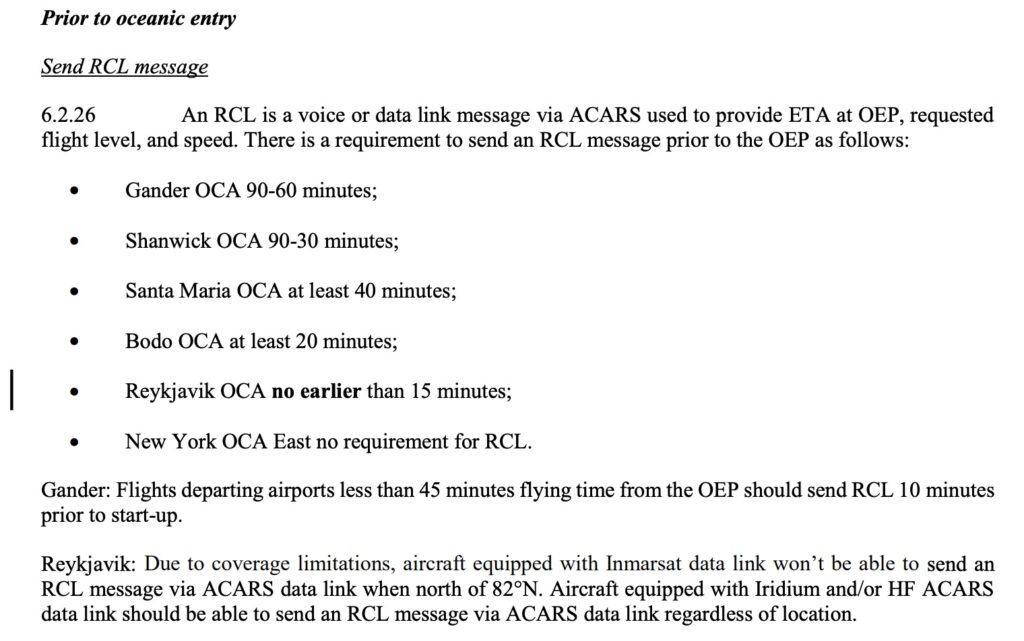
Continued confusion about the Removal of Oceanic Clearances
The new version of the NAT Doc 007 tries to consolidate all the changes made after the March 2024 roll-out of OCR procedures. The only problem is that it now says that “No oceanic clearance is required” without pointing out that this doesn’t yet apply to Shanwick!
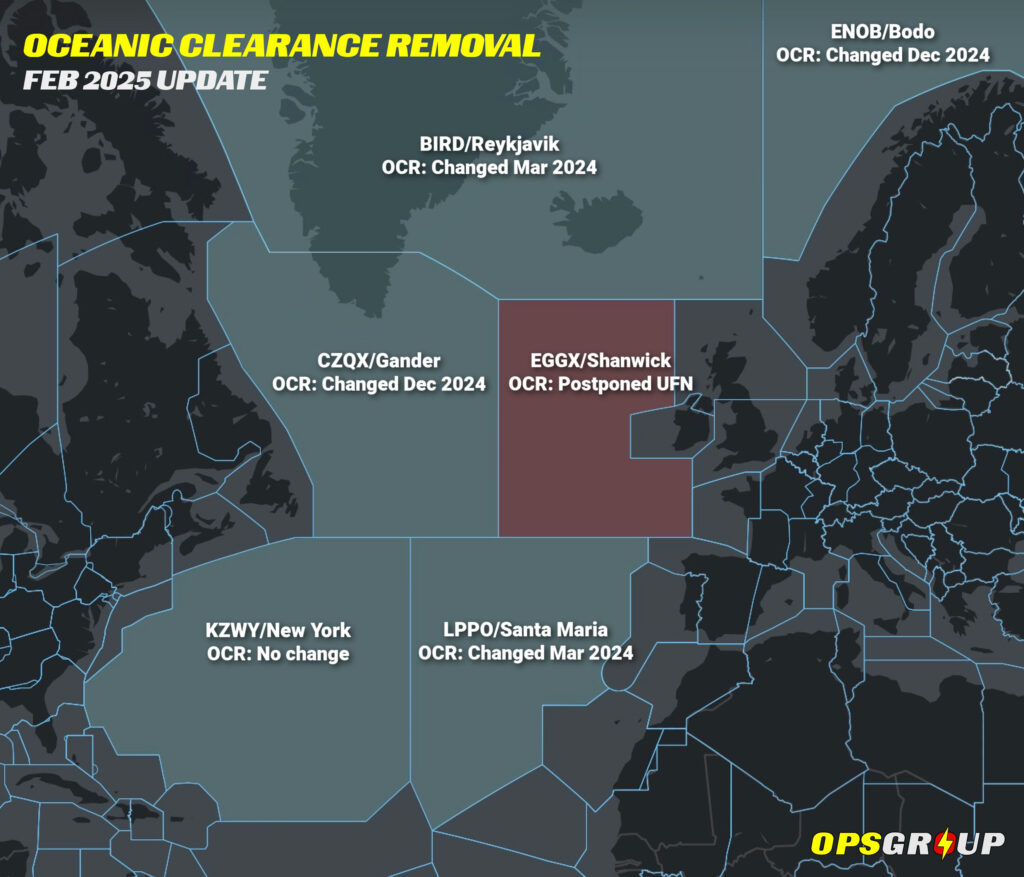
Everything about the Removal of Oceanic Clearances so far has been quite confusing for crews. What is happening, when it’s happening, what is changing, the constant implementation date changes, plus the fact that there has been a bunch of confusing documentation out there with incorrect dates and procedures that are not yet in place.
So here’s the lowdown!
- Reykjavik and Santa Maria = removed Oceanic Clearances in March 2024
- Gander and Bodo = removed Oceanic Clearances in Dec 2024.
- Shanwick = still has Oceanic Clearances!
So, Shanwick is the only NAT ANSP still to make the change – and the main news at the moment is that Shanwick does not expect to implement the removal of Oceanic Clearances before summer 2025.
Until then, westbound flights entering Shanwick from domestic airspace will continue to be the only flights on the NAT that will still require an Oceanic Clearance. For more info on all this, OPSGROUP members should check this post in their Dashboard.
Other important NAT stuff to look forward to
Formidable Shield military exercise expected in May 2025
Remember that big NAT military exercise a couple of years ago? Formidable Shield is happening again soon, and this year will be a fairly bad vintage.
There will be daily closures in the D701 area off the coast of Scotland from May 5-23, but the big one to watch out for is a large closure of airspace across the northern half of the EGGX/Shanwick FIR on May 20 between 15-21z (with May 22 as the backup day).
The map below shows everything we know about this. For more info, check this UK SUP.
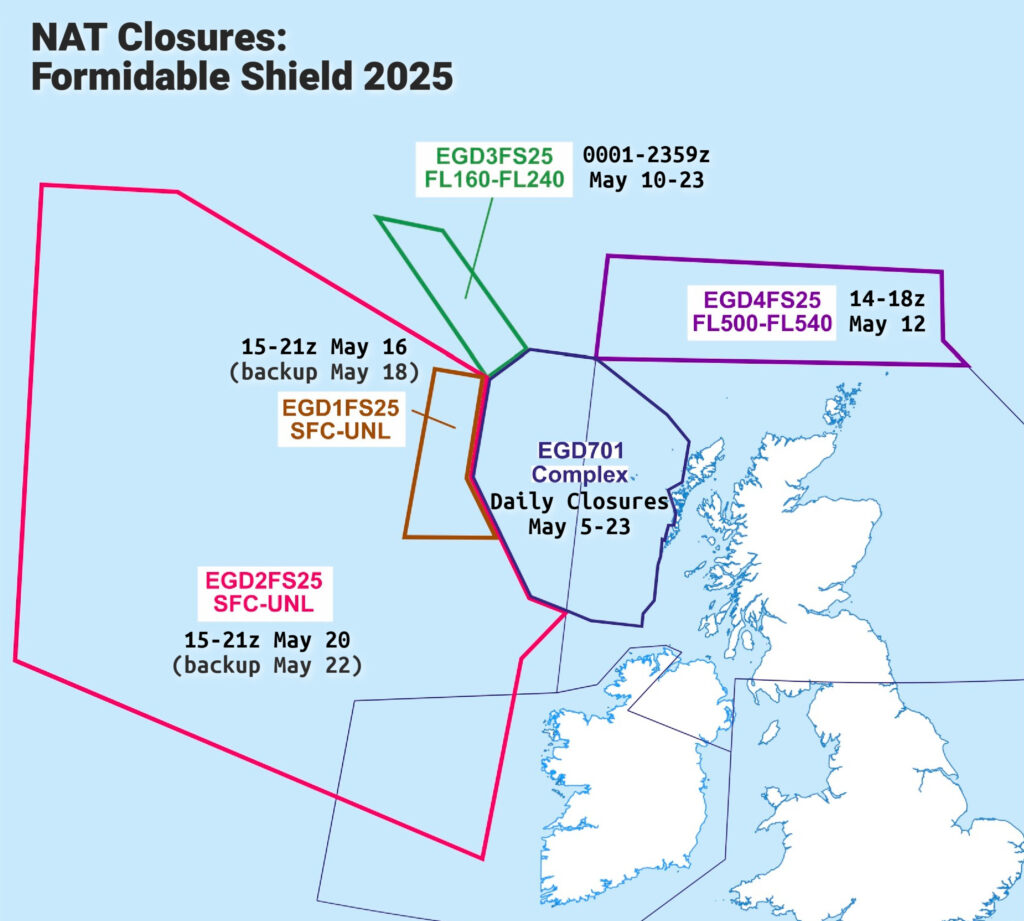
Changes to Greenland NAT alternates
BGGH/Nuuk airport’s brand new runway (7200’/2200m) opened in Nov 2024, with ILS at both ends, which on the face of it makes Nuuk a more viable diversion option for NAT traffic.
But since it opened, we’ve had reports of a few things to watch out for at BGGH/Nuuk:
- ATC may delay your arrival and put you into a hold as only one ILS approach can be handled at a time, and 15 min separation is being applied between international arrivals. So carry up to half an hour of extra fuel if possible.
- In practical terms the airport is effectively closed overnight. Because it’s a brand new airport, night opening is unrealistic at the moment – especially in winter. In the summer months, when there’s no snow and it’s daylight almost all day every day, there won’t be the same need for runway sweeping and using the airport as a diversion alternate might be more possible.
- Aircraft larger than A330 should consider continuing using BGSF/Sondrestrom as an alternate instead – it may make more sense to divert here with the longer runway and less traffic compared to the marginal runway in BGGH/Nuuk.
Also watch out for changes potentially coming at BGSF/Sondrestrom, where they’re considering downgrading ATC to AFIS at the end of 2025. More info here.
Did we miss anything?
If you spotted anything important in the new NAT Doc 007 which we missed in this summary, please let us know! Email us at news@ops.group
More help with North Atlantic ops
- Download the OPSGROUP NAT Guide (“My First North Atlantic Flight is Tomorrow”)
- Download the OPSGROUP NAT Plotting & Planning Chart
- Explanation of what you need to know about the NAT Datalink Mandate
- An overview of NAT Emergency Divert Airports
More on the topic:
- More: What’s Changing on the North Atlantic
- More: Timeline of North Atlantic Changes
- More: Spoofed Before the NAT? Here’s What to Do
- More: Shanwick Delays OCR Until Post-Summer 2026
- More: Blue Spruce Routes Are Gone (But You Can Still Fly Them)
More reading:
- Latest: Venezuela & Caribbean Airspace Update
- Latest: ReFuelEU: Europe’s new anti-tankering rules explained
- Latest: Milan targets business jets with 650% rate increase
- Safe Airspace: Risk Database
- Weekly Ops Bulletin: Subscribe
- Membership plans: Why join OPSGROUP?





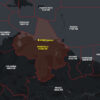




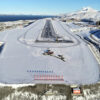
 Get the famous weekly
Get the famous weekly 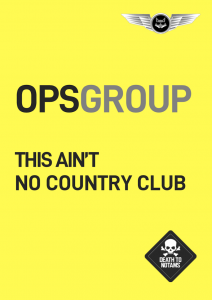



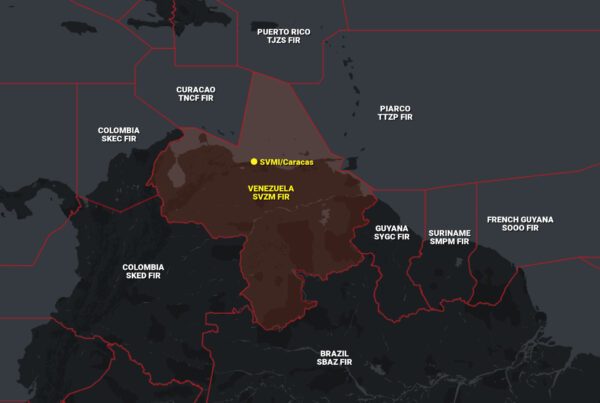
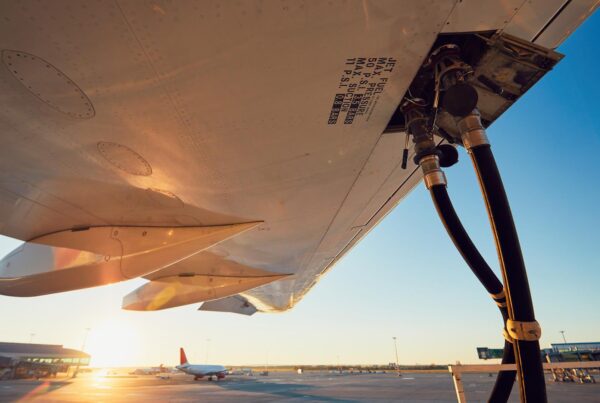

Excellent article. I’ve share it with my dispatchers.
Thanks once again for the great bulletins you provide, they are always useful, interesting and thought provoking.
Here’s a few links to the FAA who provide “summary” type pages of all the documents and regs. required on the North Atlantic, WATRS and Pacific. I’m sure you are already familiar with these pages but in the unlikely event that you haven’t seen them, they are a great place to start with looking up the answers to questions that come up about these routes. They are updated quarterly and supposed to be for US operators but there’s something for everyone, even if it’s just the abreviations. Best wishes, John.
https://www.faa.gov/sites/faa.gov/files/NAT_9.pdf
https://www.faa.gov/sites/faa.gov/files/2022-03/WATRS.pdf
https://www.faa.gov/sites/faa.gov/files/PAC_8.pdf
Thank you , much appreciated!
David thank you , this is a very important info !